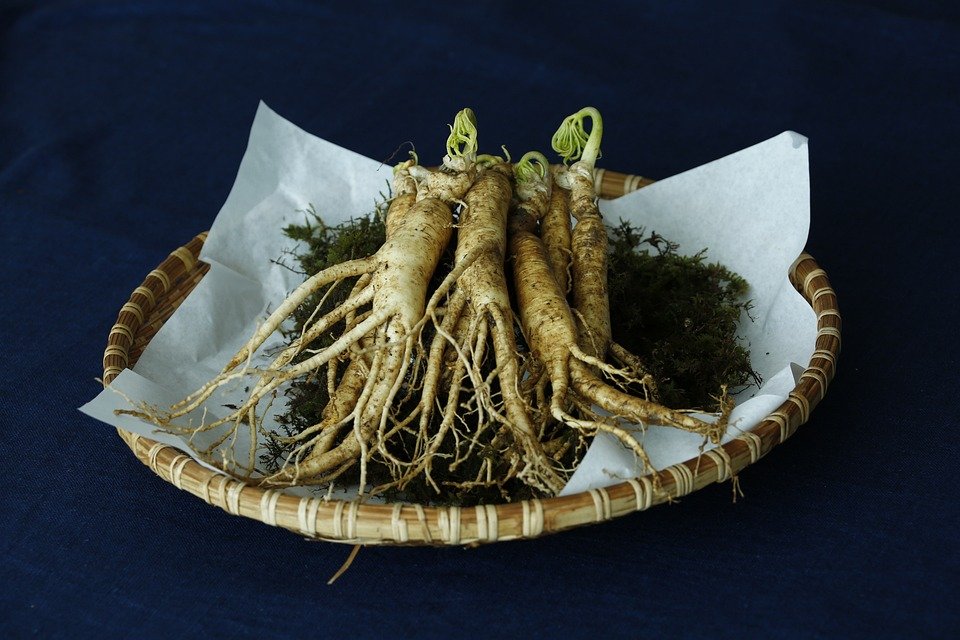A Look Into Traditional Herbal Medicine in South Korea
Traditional Korean medicine, also known as “Hanyak” (한약), is a combination of herbs, from flowers to fungi, and ancient folk remedies influenced by China. Hanyak is part of Hanbang (한방), a holistic form of medicine that includes acupuncture, moxibustion, cupping, and herbs. In ancient Korea, this medicine was used in rural areas when people could not afford “proven” treatment or a highly rated doctor or physician. To this day, rural and greener areas still grow and use this medicine to honor their culture. Some traditional Korean medicine has been proven to work against disease and illness, reduce the process of obesity, and ease back pain, asthma symptoms, and inflammation. However, not all traditional Korean medicine is FDA-approved or proven to work. But what are the most popular forms of Hanyak?
Ginseng
Image: Pixabay
Ginseng (인삼) is a root herb used traditionally in drinks and fermented, but is globally sold in tablet form in different doses. It can also be taken as a powder, an oil, eaten raw or cooked, or as tea. There are many different types of ginseng and all of them have different properties and benefits, however, Korean ginseng and red ginseng are among the most popular.
Ginseng is full of antioxidants which reduce inflammation and oxidative damage to cells to help immunity against chronic disease and lower blood sugar to protect against diabetes. Its benefits are also similar to B vitamins as many take ginseng for mental health. For example, it could reduce tiredness, increase energy and protect brain functions (such as memory, behavior and mood, and damage against free radicals), supporting the average working person to someone with Alzheimer’s disease. Despite the research already surrounding this, more research needs to be conducted to prove the link between immunity, ginseng, and liver properties.
Currently, there is research surrounding inflammation and cancer. For example, it may be able to reduce the risk of some cancers by 16% by supporting cells to produce and grow normally. Ginseng may also reduce the side effects of chemotherapy and promote some cancer treatments to work better.
Specifically for those with male genitalia, red ginseng has reported properties that reduce erectile dysfunction. It does this by reducing oxidative stress in the blood vessels and tissues. It also increases nitric oxide to improve normal function, muscle relaxation, and blood circulation, but this has not been proven and needs further research.
Green Tea
Image: Flickr
Pure green tea (녹차) from Jeju Island (제주도) is known to be the best and most expensive tea in South Korea due to its many properties. UNESCO awarded Jeju a “triple crown” in the environment field for its tea, the only place in the world to achieve it. Their green tea is grown in fields surrounded by fresh air, the perfect temperature and weather, healthy soil, and the cleanest water. While matcha has a lot of benefits, Asian green tea carries more benefits than other types of tea from other countries, and it’s not just Jeju that has amazing tea - it’s found all over South Korea!
Back in ancient times, many types of tea were used as a treatment or cure for multiple illnesses and diseases. While tea can come in bags or as a loose leaf, it’s not just leaves that make tea. Less known, tree bark, plants, roots, and mushrooms are all part of the tea, and fruit and vitamin teas also have many health benefits. Tea doesn’t even come in just a drinkable form now, as it’s put into beauty and skincare products, such as moisturizers and soap, tablets, and even food.
Green tea carries many health benefits, but why? Because it’s rich in antioxidants. It helps improve brain function as well as reduce the risks of certain diseases. For example, it reduces damage to cells by reducing oxidation, lowers bad cholesterol, and contains amino acids that reduce anxiety, making a lower risk of getting common cancers and heart disease. It also helps fast recovery by stopping T Cells (a type of white blood cell) from destroying pathogens.
Fungi
Image: Pixabay
You’ve most likely never heard of sanghwang (상황버섯) before, a type of mushroom (fungi) commonly used in China, Japan, and South Korea. It’s an expensive product usually sold in patches that looks like a mushroom disguised as tree bark. Sold dried or put into a daily product, sanghwang has amazing properties that not many outside of Asia know of, and it’s often found in multiple different Korean herbs used in everyday medicine.
The one major health benefit of sanghwang is that it boosts immunity and protects against cancer without side effects after a study by Song Chihyeon, Nageongsu, Yang Byeonggen, and Jeon Yongjae found that natural sanghwang polysaccharides, a type of carbohydrate with a high level of sugar molecules, was 65.7% and cultivated 63.9%. Overall, it has a tumor inhibition rate of 96.78%, which ranks it astonishingly higher than other fungi. Tumor inhibition rate refers to the treatment rate. For example, how big is the growth now compared to before while taking this product and how effective has it been in general?
The mushroom protects against stomach cancer, esophageal cancer, duodenal cancer, colon cancer, rectal cancer, and liver cancer specifically, but also supports physical strength, hangovers, digestion, and potentially other stomach problems; reduces anemia and uterine bleeding; and irregular menstrual cycles. While this product is not commonly used outside of Asia and is difficult to understand, its popularity is rising within the medical field due to continuous studies.
Edited by Deshalia Murray




